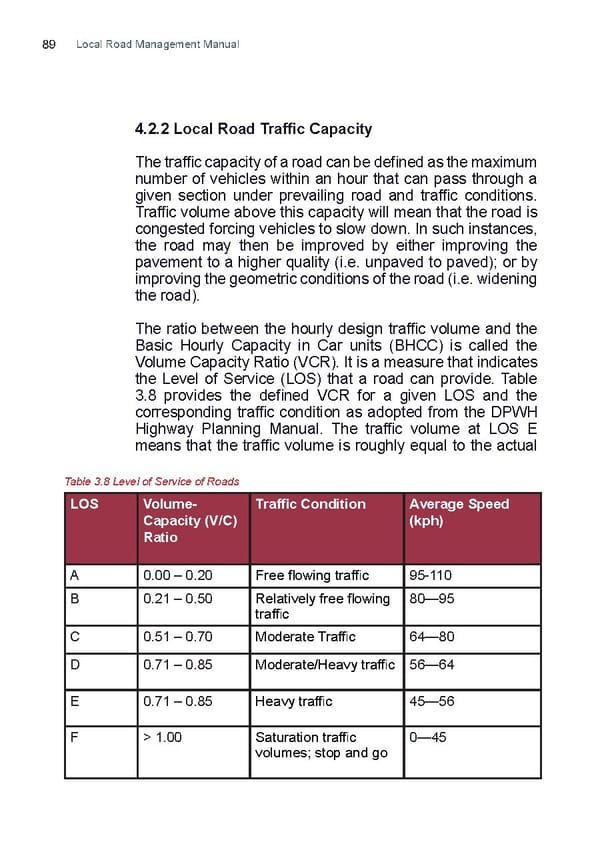Local Road Management Manual 89 4.2.2 Local Road Traiffc Capacity The traiffc capacity of a road can be deifned as the maximum number of vehicles within an hour that can pass through a given section under prevailing road and traiffc conditions. Traiffc volume above this capacity will mean that the road is congested forcing vehicles to slow down. In such instances, the road may then be improved by either improving the pavement to a higher quality (i.e. unpaved to paved); or by improving the geometric conditions of the road (i.e. widening the road). The ratio between the hourly design traiffc volume and the Basic Hourly Capacity in Car units (BHCC) is called the Volume Capacity Ratio (VCR). It is a measure that indicates the Level of Service (LOS) that a road can provide. Table 3.8 provides the deifned VCR for a given LOS and the corresponding traiffc condition as adopted from the DPWH Highway Planning Manual. The traiffc volume at LOS E means that the traiffc volume is roughly equal to the actual Table 3.8 Level of Service of Roads LOS Volume- Traiffc Condition Average Speed Capacity (V/C) (kph) Ratio A 0.00 – 0.20 Free lfowing traiffc 95-110 B 0.21 – 0.50 Relatively free lfowing 80—95 traiffc C 0.51 – 0.70 Moderate Traiffc 64—80 D 0.71 – 0.85 Moderate/Heavy traiffc 56—64 E 0.71 – 0.85 Heavy traiffc 45—56 F > 1.00 Saturation traiffc 0—45 volumes; stop and go
 LRM Manual CMGP Page 88 Page 90
LRM Manual CMGP Page 88 Page 90